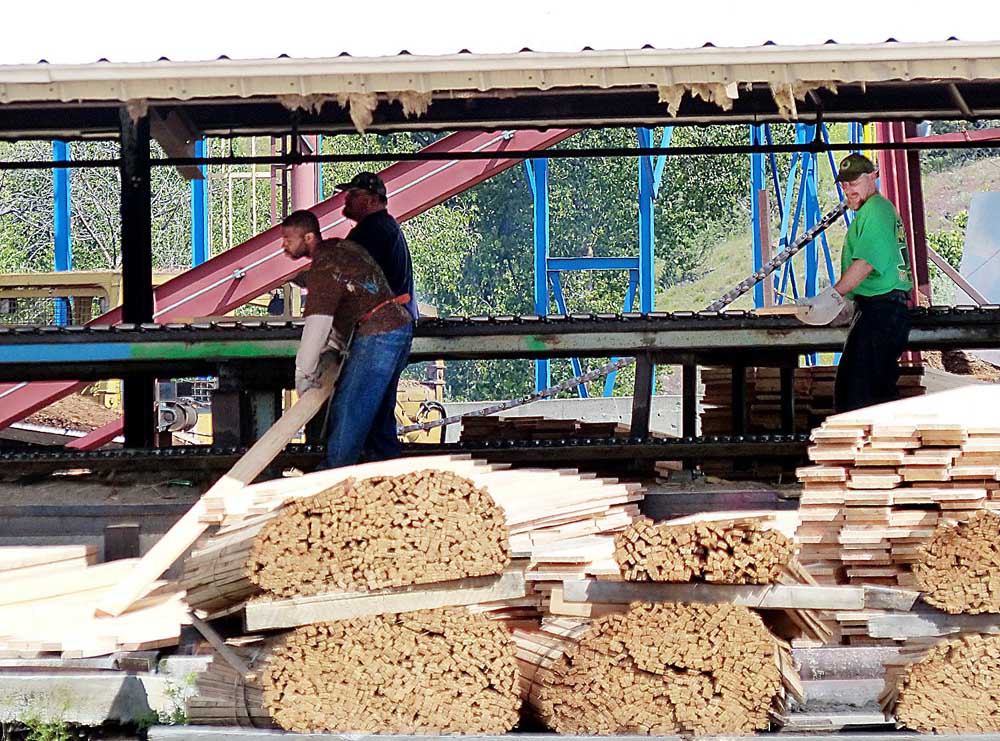Construction underway for torrefaction plant
Published 3:45 pm Tuesday, June 11, 2019

- A hearing will be held June 18 on an air quality permit for a torrefaction plant planned at the Malheur Lumber Co. mill in John Day.
Progress is being made on construction of a $15.5 million torrefaction plant at the Malheur Lumber Co. mill in John Day. The plant could be running by September, Matt Krumenauer, vice president of special projects for the U.S. Endowment for Forestry and Communities, told the Eagle.
“This is the largest single investment in John Day since the Malheur Lumber Co. mill was built,” he said.
The Endowment is the parent entity of Restoration Fuels, which will operate the plant. Work on concrete foundations and utilities began earlier this year, Krumenauer said.
“That’s the hardest part,” he said. “After that, you just put everything in place and bolt it together.”
The Oregon Department of Environmental Quality also gave permission for work on a new boiler system to begin ahead of air quality permit approval, Krumenauer said. A hearing will be held on the permit application at 6 p.m. Tuesday, June 18, at the Canyon City Community Hall.
New emissions
Ochoco Lumber Co., which owns Malheur Lumber Co. and is applying for the permit, proposes increasing the current limit for particulate matter from up to 34 tons per year to 42 and for nitrogen oxides from up to 50 tons per year to 77. The mill is not a major source of hazardous air pollutants, according to the DEQ application.
As part of the torrefaction project, plans call for replacing two Wellons wood-fired boilers currently used for heating the mill’s seven lumber-drying kilns with a single Hurst wood-fired boiler that can meet the mill’s current needs as well as those of the torrefaction plant.
The Hurst boiler, which was a standby boiler at a timber plant in Mississippi, is more modern and efficient than the current boilers, so total emissions should be reduced, said Joe Koerner, the operating manager for Restoration Fuels. The same crew that took apart the boiler in Mississippi will reassemble it in John Day.
New emissions for the site will come from a 15-foot-wide belt dryer, which will be heated by the boiler through a heat exchanger, and the rotary torrefier unit, which take dried wood chips from the belt dryer and heat them into a charcoal-like material.
The low-temperature belt dryer will be capable of drying up to 149,000 tons of wood per year.
It was designed and will be built by Industrial Mechanical Inc. of Georgia, which sent a crew to oversee the overall construction project.
The torrefier came from a mill that produced oriented-strand board, where it was used to dry wood chips. The large triple-pass rotary torrefier will be heated to a higher temperature using a mixture of propane and syn-gas, which is emitted by wood chips during the torrefying process.
The belt dryer and torrefier are expected to produce particulate matter, nitrous oxides, carbon monoxide, volatile organic compounds, methanol and visible emissions. A large electrostatic precipitator unit will be installed to control particulate emissions.
Forest health
Restoration Fuels’ overall goal is to support stewardship work on national forests, marketing the smaller diameter logs and twisted or partially rotten logs removed as part of fuel reduction thinning projects.
A large supply of logs ready for torrefaction already sit at the mill’s log yard on Lower Yard Road in John Day. The mill’s existing chipping facility will be used to convert the logs into material for the new plant.
A machine from Denmark will be used to compress the torrefied wood into briquettes or pellets. Much of the mill’s current pellet plant machinery will remain, but the plant will be reconfigured so the mill can continue to produce white wood pellets and bricks as well as torrefied pellets and briquettes.
Japan — which has imposed tariffs on power produced by nuclear and coal, making torrefied wood competitive — has shown interest in torrefied wood mass.
Restoration Fuels expects to ramp up production at the John Day torrefaction plant — the first commercial plant in North America — to more than 100,000 tons per year.
“That’s about one log truck or one chip truck of biomass per hour,” Krumenauer said.
Proposed plans call for transporting the torrefied wood to a rail line in Prineville, at which point it can move on to domestic or international customers.
Comments on the air quality permit are due by June 24. For more information on the air quality permit, visit https://go.usa.gov/xmdjG. For more information about the new torrefaction plant, visit restorationfuels.com.



